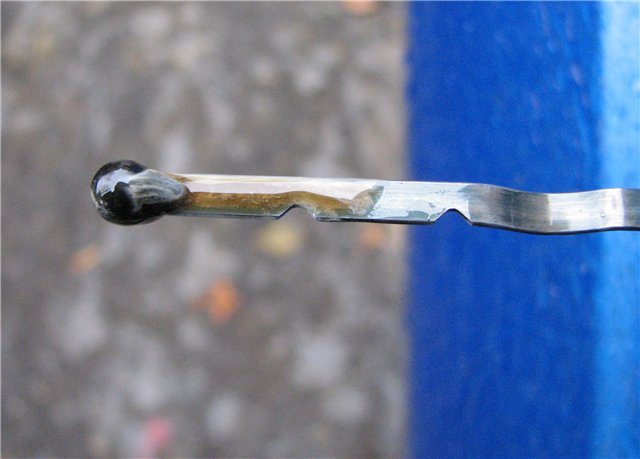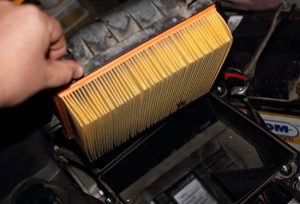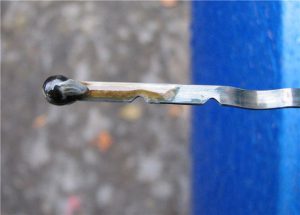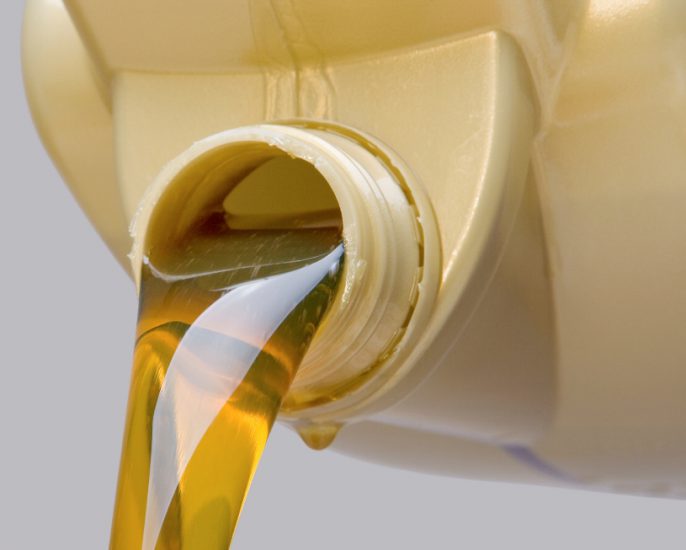When is it optimal to change the engine oil in the engine: by mileage, by condition or by time
As you know, engine oil is a working fluid in. The main function of the material is to protect loaded mating elements from dry friction by creating an oil film. Also, the lubricant allows for effective cleaning of the oil system, acts as a neutralizer of oxidative processes, removes excess heat from parts and assemblies to prevent local overheating, etc.
Given the significant temperature fluctuations and high heating, as well as due to the active chemical processes that the lubricant inside is exposed to, engine oil is prone to accelerated aging and a rapid loss of its useful properties. It becomes clear that grease is a consumable, and the required frequency of oil changes is strictly defined for any engine. In parallel, a number of specific factors can additionally influence the life of the material.
Next, we'll talk about why you need to change the oil in your engine and how often you need to change the oil. It will also consider such issues as the minimum oil change interval, how long it takes to change the oil in the engine in terms of time and mileage, whether the oil in the engine is often changed and what conditions the change intervals depend on.
Read in this article
Why you need to change the engine oil
As already mentioned, the lubricant, even in an absolutely serviceable engine, is subject to a natural aging process. This means that its properties, one way or another, deteriorate as a result of oxidation, as well as in connection with the gradual cessation of operation (operation) of active additives and detergents in the composition of the lubricant.
Ultimately, the oil accumulates a large amount of soot, wear products and other contaminants, the viscosity-temperature characteristics are violated (the lubricant thickens, blackens), the shear stability under load changes, the strength of the oil film, etc. Prolonged driving on dirty lubricant leads to clogging of filters and channels of the oil system with deposits, the resource of the internal combustion engine is also greatly reduced.
The fact is that the engine in this case is much less protected from mechanical wear at the interface of the loaded elements. Also, as a result of a significant change in the viscosity index towards an increase, there is a general deterioration in the pumpability of the oil through the system. Together with a decrease in throughput and / or clogging of oil channels (the power unit begins to experience), significant engine wear occurs.
In parallel, it should be noted that various ICE malfunctions also affect the properties of the oil. For example, dust and dirt entering through the intake, oil dilution due to leaks into the fuel crankcase, penetration. In these cases, wear is also significantly increased, and engine seizure can occur.
Determine when to change the oil in the engine

So, it is quite obvious that the lubricant in the motor needs to be replaced. At the same time, it is important to clearly understand when to change the oil. Taking into account the fact that the material in the internal combustion engine is aging, it turns out that the more often it is replaced, the better. However, it should be borne in mind that too early replacements in many cases are not needed.
This approach is irrational, as it will lead to serious financial costs, and the benefits for the motor may not be so obvious. For this reason, service intervals should be calculated taking into account a number of additional factors and features. Otherwise, you need to know on what basis and how to choose the correct replacement intervals.
At the very beginning, we note that there simply does not exist an unambiguous and accurate answer, after how many kilometers, engine hours or months to change the oil. There is only the engine manufacturer's recommended oil change interval, which is indicated in the owner's manual. At the same time, in many cases, the frequency of replacements remains rather individual.
- Most importantly, do not exceed the grease life. To do this, do not rely solely on the recommendations of the vehicle manufacturers. For example, if the manual says that replacement should be done every 15 thousand km, then this does not mean that you always need to adhere to only such an interval.
- You also do not need to rely on the statements of oil manufacturers in the fuel and lubricants markets. Even if a high-quality oil from the Longlife line is used (for example, with an extended service life up to 30 or 50 thousand km.), There is no guarantee that the lubricant normally runs out for the entire declared resource or even half of that mileage.
The fact is that the manufacturers of both internal combustion engines and oils indicate highly averaged indicators. In other words, many external factors that reduce oil life are simply not considered. Let's figure it out.
Let's start with the service interval in the manual. As a rule, you can find an indication that the oil needs to be changed, for example, every 15-20 thousand km. or at least once every 12 months (whichever comes first). However, it should be understood that such recommendations of auto manufacturers are average for a particular type of engine.
This does not take into account the general air pollution, fuel quality, individual properties of a particular engine oil, individual characteristics of vehicle operation, etc. Only in some cases can the manufacturer take into account regional peculiarities separately, but this practice is more typical for cars that are specially developed for specific markets. This does not apply to mass models.
It should also be added that the car manufacturer itself is not particularly interested in the engine working for the maximum possible period. The main task is the proper operation of the internal combustion engine during the warranty period, then the unit must go through a certain average number of hours to maintain the prestige and confirm the competitiveness of the brand.
It turns out that it is more profitable for the manufacturer to extend the service interval for a new car under warranty, which makes the product more attractive and convenient for the client, but at the expense of the internal combustion engine resource. At the same time, there is also no particular interest in further extending this resource. What's more, breakdowns after the end of the warranty period is a proven way to get customers to change their car for a new one rather than doing repairs.
It becomes clear that for auto manufacturers, the service interval is now a marketing ploy, as it implies the opportunity to offer customers reduced costs for warranty service. If we talk about the motor and its resource in the long term, then the interval stated in the vehicle maintenance and operation manual can be greatly increased.
Now let's move on to the oils. Many modern products are positioned as motor oils with an extended service life (service interval). As a rule, such a grease has an additional Longlife mark. At the same time, it is a mistake to believe that this oil can be safely poured into any engine and changed at an increased interval.
- First of all, the ICE manufacturer must separately indicate that in the case of using the Longlife oil group, an increase in the service interval is allowed for a specific type of engine.
- Longlife oil must also be approved by the engine manufacturer for use in its engine, that is, the product of a particular brand must undergo a separate certification.
- The engine manufacturer only permits the use of oils according to the Longlife scheme if the vehicle is used exclusively in the prescribed operating conditions and is under conditions suitable for the use of lubricants according to the extended drain schedule.
If everything is more or less clear with the first and second points, then questions about the third position immediately arise. Usually, there is no detailed description of the "optimal" modes, while the declared extended oil change intervals are calculated based on these modes.
We add that, based on practical use, an increase in the interval for Longlife oil is possible if the car constantly drives on the highway with medium engine loads. At the same time, high-quality fuel is poured, high-quality filters are installed, there is no dust on the roads, etc.
It is noteworthy that such conditions are quite real for developed countries, which cannot be said about cars that are operated in large cities or drive along highways in the territory of the CIS countries. For such machines, the so-called severe operating conditions are more relevant, while any lubricant ages very quickly. In view of the above, replacing old used oil (both regular and Longlife) is only desirable with a decrease, and not with an increase in the interval.
What affects engine oil life


- seasonality;
- operating modes;
- fuel quality;
- oil base;
- the efficiency of the filters;
- the general condition of the internal combustion engine;
Some of these factors can be influenced by the driver himself (choose high-quality oils and filters, monitor the operation of the engine and troubleshoot in a timely manner), while other features cannot be changed, that is, they must be additionally taken into account. Subsequent analysis allows you to more accurately determine in what conditions the vehicle is operated.
The fact is that the frequency of engine oil changes is highly dependent on the operating conditions. If the machine is subjected to so-called harsh conditions, the oil change interval is necessarily reduced.
- Severe conditions should be understood to mean certain conditions. These include long-term downtime of the car, after which trips are made, but then the car stops again. This mode especially greatly reduces the lubricant resource in winter. The fact is that condensate accumulates inside the engine, chemical processes are activated, and oil is oxidized.
On motors that are operated daily and warm up to operating temperatures, the formation of condensation is less intense. At the same time, even constant, but short trips, during which the internal combustion engine does not reach operating temperatures, still do not allow the formation of condensation to be prevented.
- Driving in the city at low speeds, traffic jams, frequent accelerations and stops. This mode is difficult for the motor, since heavy loads on the internal combustion engine arise precisely during the start of movement from a standstill. At the same time, at low speeds, the oil pressure is not high, its heating increases, engine coking occurs, etc.
As for traffic jams and downtime at traffic lights, the engine in this case runs at idle. The idling mode is also considered difficult for the engine, since the power unit cools worse, runs on a lean mixture, and the oil pressure is not high.
- Poor quality fuels also strongly affect the properties of the oil. The fact is that combustion products accumulate in the lubricant, impairing the useful properties of the material. It is important to understand that the recommendations for replacement intervals in the service book are often indicated for fuel that meets European standards. There is simply no such fuel on the territory of the CIS.
- Frequent loads on a car engine, driving at maximum speed at high revs, towing a trailer, constant transportation of a large number of passengers and goods.
In these cases, the engine must be "turned" in order to get more power from it. It is quite obvious that the oil in this case oxidizes faster and loses its properties. By the way, riding in mountainous or hilly terrain with alternating long ups and downs is also a difficult condition. On uphills, the driver loads the engine, and on downhills, engine braking is often used.
- Driving on dirt roads, vehicle operation in conditions of increased air pollution. In this case, the oil actively accumulates pollution from the environment, the lubricant resource is noticeably reduced.
As you can see, domestic operating conditions are far from the "calculated" ideal and can be fully considered difficult. For this reason, the relubrication intervals must be adjusted separately, taking into account the above factors.
Oil operation in practice
To determine which replacement interval is better to adhere to, one should proceed from:
- features of operation;
- operating modes;
- quality (base) oil;
If the car is operated in the CIS, and a mineral or is used, then it is recommended to reduce the replacement interval by 50-70% from that stated in the manual. In other words, if the instructions provide for a planned replacement after 10 or 15 thousand km. in terms of mileage, and also at least once a year in time, then the lubricant must be changed every 5 thousand km. or every 6 months (whichever comes first).
Checking the oil level in the engine, determining the exact indicator. When is it best to check the lubricant level on a cold or hot engine. Helpful hints.
















